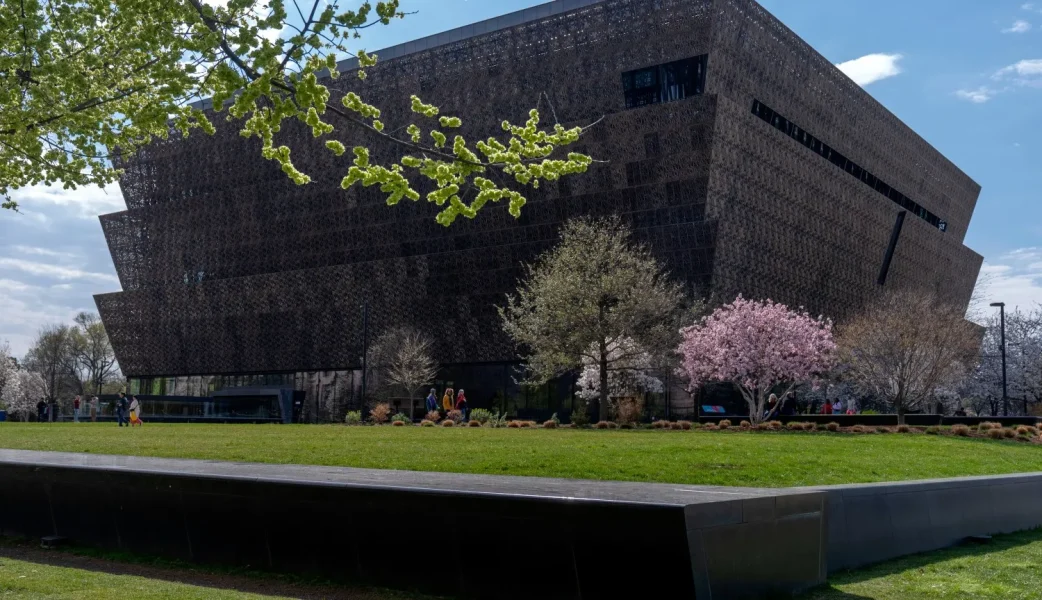By Asha Moore-Smith
Washington D.C. is rich with Black history, and filled with landmarks that honor the various cultural contributions Black Americans have made in the areas of art, activism, education, and so much more. They tell the stories of resilience, creative excellence, and the power of our community. As a DC native, I grew up visiting some of these sites, and learned about their deep historical significance. While places like the National Museum of African American History & Culture (NMAAHC) and The Frederick Douglass National Site are well known, others are hidden gems. Whether you are familiar with the city, visiting, or just getting to know your way around it, here are six lesser-known Black history landmarks to explore in the nation’s capital.
1. Mary McLeod Bethune Council House National Historic Site
Located in the historic Logan Circle neighborhood, this site was the home of educator and civil rights leader Mary McLeod Bethune. As the founder of the National Council of Negro Women, Bethune’s residence became a cultural hub for advocacy and activism. The house preserves her legacy, offers insight into her influential role in shaping American history. There is also a Mary McLeod Bethune memorial in Lincoln Park, which is the first monument of both an African American and a woman in a public park in the nation’s capital. Most recently, the National Park Service just celebrated Bethune’s 150th birthday on July 12, 2025. Plan a guided tour of this historic home by clicking here.
2. Mt. Zion Cemetery
Tucked away in Georgetown historic district, Mt. Zion Cemetery (The Old Methodist Burial Ground)/Female Union Band Cemetery is one of the oldest Black cemeteries in Washington D.C. Established in the early 19th century by free Black American women, it served as a burial ground for both free and enslaved African Americans. The cemetery has also been linked to the underground railroad, with one of its burial vaults serving as a hiding place for the enslaved who ran away. Headstones from the cemetery can be found in Mt. Zion church, the oldest Black church in Georgetown, and in the District of Columbia. Learn more about its history here.
3. Emancipation (Freedman’s) Memorial
Along with the Mary McLeod Bethune memorial, the Emancipation Memorial (also known as the Freedman’s Memorial) can be found in DC’s Lincoln Park. Dedicated on April 14, 1876, this memorial commemorates the abolition of slavery and honors the contributions of formerly
enslaved people. Internationally renowned activist and abolitionist Frederick Douglass, who also has a national historic site in DC was the keynote speaker at the Emancipation Memorial dedication at that very location nearly 150 years ago. The monument features a statue of Abraham Lincoln and a newly freed black man, symbolizing the fight for freedom and equality.
4. Paul Laurence Dunbar’s Home
Born in 1872 to formerly enslaved parents, Paul Laurence Dunbar was one of the first influential Black poets in American literature whose literary works influenced Harlem Renaissance writers such as James Weldon Johnson, Langston Hughes, and Claude McKay. While living in Washington D.C., he attended Howard University, and worked as a research assistant at the Library of Congress. Though he only lived in this DC home from 1898-1902, the site, located in DC’s historic LeDroit Park, offers a glimpse into the life and work of this pioneering writer.
5. Edward Kennedy “Duke” Ellington Residence
There are a few well known locations in the district that pay homage to the late great jazz legend Duke Ellington, such as the historic Duke Ellington School of the Arts, and the Duke Ellington bridge. However, Ellington’s legacy is also honored with a plaque at the modest rowhouse residence where he spent part of his youth in the Shaw neighborhood of Washington D.C. from 1910-1914. Learn more about Duke Ellington’s former residence and its plaque dedication here.
6. Smithsonian’s Anacostia Community Museum
Founded in 1967, the Anacostia Community Museum is dedicated to exploring the experiences of Black Americans and urban communities. Located east of the river, the museum features exhibitions and programs that highlight local stories, activism, and cultural heritage, making it a cornerstone of Black history in D.C. One of the museum’s most current, insightful and exciting exhibitions is “Bold and Beautiful Vision: A Century of Black Arts Education in Washington, DC, 1900–2000”. This exhibit runs until January 2026.
Learn more about their current exhibits here: https://www.si.edu/exhibitions
These landmarks, though not always in the spotlight, offer unique perspectives on the city, once referred to as Chocolate City, and visiting them can provide a deeper appreciation for its black history and the legacy of those who laid the foundation for freedom, equality, and excellence.

